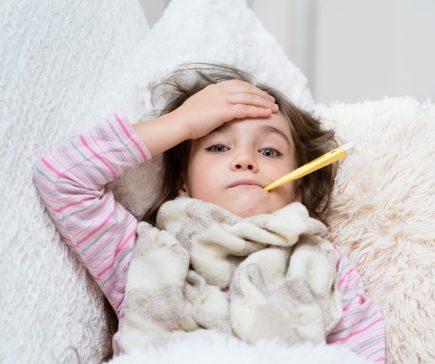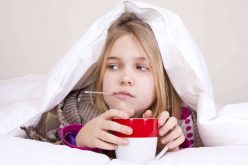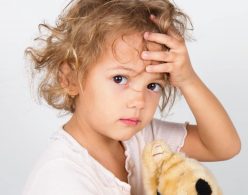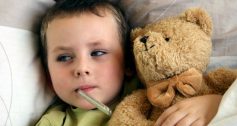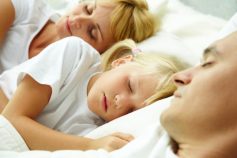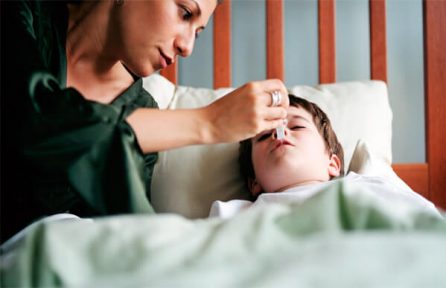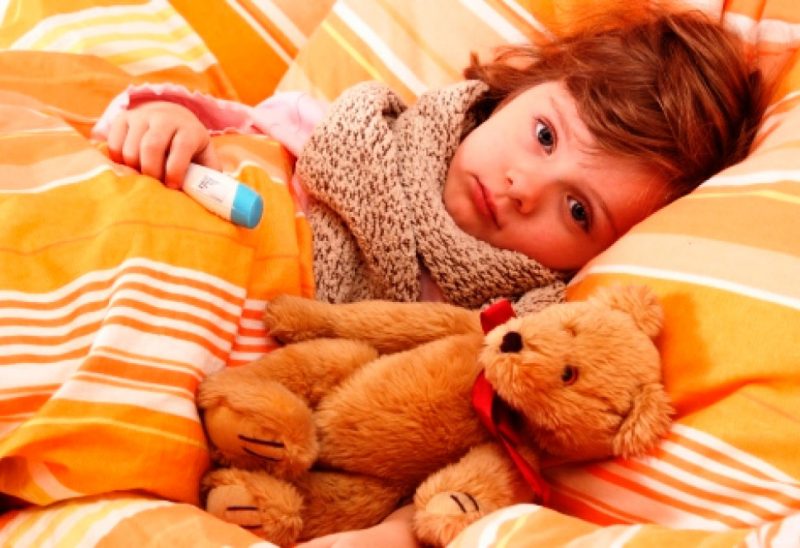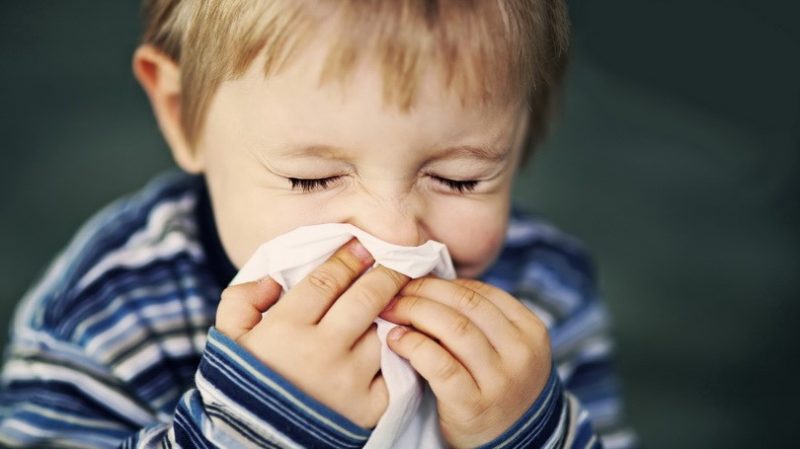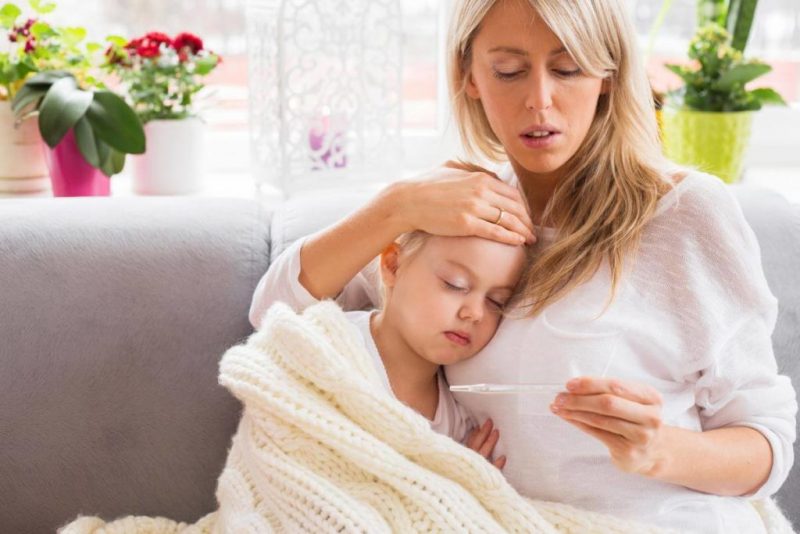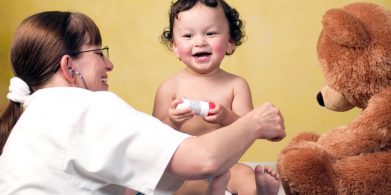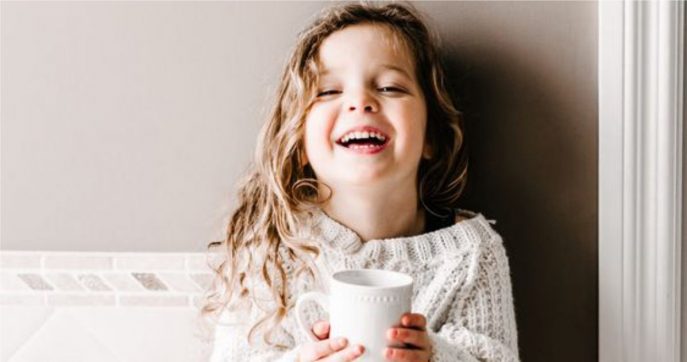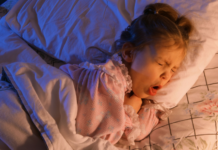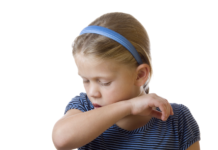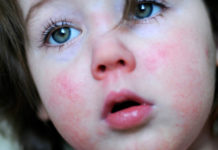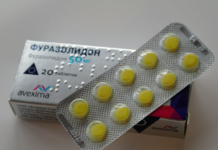Pneumonia is an inflammatory process that affects the lung tissue. This is due to the entry of pathogenic bacteria into the body. Such a pathology is dangerous in that it develops rather quickly, and can lead to a number of serious complications. Therefore, treatment should be started on time, and in order not to start the disease, it is important to be able to recognize the signs of pneumonia in a child.
Material Content:
Ways of infection with pneumonia and risk group
The main cause of pneumonia is the ingestion of viruses and bacteria into the body and their subsequent active reproduction. In addition, the disease can occur due to chest injury, allergic reactions and burns of the upper organs of the respiratory system. Depending on this, the pathology is divided into primary and secondary.
The following factors can contribute to the development of pneumonia in children and adolescents:
- advanced bronchitis;
- obstructive processes in the airways;
- allergy;
- chemical vapor poisoning;
- weakness of the body as a result of frequent colds, malnutrition or taking potent drugs;
- chronic disorders affecting the nasopharynx and larynx;
- living in unsanitary conditions;
- secondhand smoke, when the child often has to breathe cigarette smoke.
On a note. Some types of this disorder, such as viral pneumonia, are contagious. A child may become ill due to contact with a person suffering from pneumonia.
Types and classification
Pneumonia is divided into unilateral and bilateral. In the first case, the inflammatory process affects only one lung, and in the second, both are affected.
By localization, this disease can be:
- focal, when a small part of the organ is affected;
- segmental, if two or more sites are affected;
- lobar, spreading to the pulmonary lobe entirely;
- confluent, when small foci, growing, merge together;
- total, in which the lung is completely affected.
The last form of the disease is considered the most severe, this condition threatens with dangerous violations that can lead to the death of the patient.
Primary signs of the disease in a child
Only an experienced doctor can recognize pneumonia in the initial stage. But parents should be wary if they notice such signs:
- The child became lethargic and moody, often crying.
- The skin of the baby is pale and slightly moist, he constantly sweats.
- An unhealthy flush appeared on his face.
- Periodically, attacks of dry cough occur, the temperature rises slightly.
- The kid refuses to eat and drink.
Since these symptoms can also indicate other health problems, and if they are detected, you need to visit the local pediatrician.
Symptoms and clinical presentation
A few days after the onset of the first symptoms of pneumonia in children, the condition worsens, and the following changes occur:
- The cough becomes deep and wet, with the discharge of sputum, with attacks becoming more frequent.
- The temperature rises to 38 degrees and above, it cannot be brought down.
- The integuments from pale become bluish, this is especially noticeable in the nasolabial "triangle".
- Shortness of breath and wheezing appears, breathing quickens.
- There are pains in the chest.
- Abdominal pain, and sometimes diarrhea, nausea, or vomiting, are associated with appetite disorders.
- Failures of the heart rhythm and tachycardia are noted.
In addition, there may be changes in the behavior of the child, he becomes irritable, quick-tempered and anxious, and then this state is replaced by complete apathy.
On a note. Sometimes pneumonia occurs without temperature, most often it occurs in patients of infancy. In such a situation, the disease is indicated by a refusal to eat and constant drowsiness, as well as a sluggish reaction to external stimuli.
Diagnostic measures
When the child has the listed symptoms, a visit to the clinic can not be postponed. First of all, a medical examination is carried out, during which parents will need to answer the following questions as accurately as possible:
- When are the first signs of ill health noticed?
- What medicines were given to the child?
- Are there any other warning signs?
After examination, the child is prescribed a comprehensive examination, the purpose of which is to clarify the following points:
- the nature of the disease by the type of pathogen;
- white blood cell count;
- localization of inflammation.
For this, a clinical and biochemical blood test is prescribed, as well as a chest x-ray. As a rule, to make an accurate diagnosis of these measures is enough.
Treatment of pneumonia in a child
The treatment of pneumonia is carried out comprehensively, and the following drugs are prescribed as part of drug therapy:
- Broad-spectrum antibiotics. They are necessary in order to destroy the harmful bacteria and prevent their further reproduction.
- Bronchodilators. With the help of these drugs, sputum is removed from the lungs. As a rule, they are prescribed in the form of syrups or solutions for inhalation.
- Antipyretic drugs. They are needed to combat the temperature when it exceeds 38 degrees.
- Immunomodulators. These funds are necessary to stimulate the body's defenses.
- Prebiotics. Such drugs help reduce the negative effects of antibiotics and restore microflora.
- Vitamins The complexes are designed to replenish cells with the necessary trace elements and prevent vitamin deficiency.
- Analgesics.They are used in cases when the patient is tormented by pain in the chest or head.
In addition, physiotherapeutic procedures are indicated for patients, most often prescribed:
- inhalation;
- electrophoresis;
- magnetic therapy;
- UHF;
- inductothermy.
You will also need to adhere to the following recommendations:
- Observe bed rest.
- Give your child a plentiful drink.
- Feed the patient light food, mainly boiled or stewed, without overloading the stomach, and if it is a baby, give only breast milk or mixtures.
- Regularly clean and ventilate the room where the patient is located.
- 5-7 days after the start of treatment, take the child out for a short while if the effect of therapy is noticeable and the temperature is less than 38 degrees.
When there are no complications, a full recovery occurs in 4-6 weeks, and in case of any problems it can take more than 3 months.
Is it possible to treat pneumonia in children at home
If pneumonia occurs without visible complications and the child's condition is satisfactory, it is permissible to treat him at home. But the final decision is made by the doctor, not the parents.
When hospitalization is not necessary, for successful treatment you will need:
thoroughly comply with all doctor's prescriptions;
- give the baby the necessary medicines strictly according to the prescribed scheme;
- carry out the prescribed procedures;
- maintain housing hygiene;
- at the slightest deviation and the appearance of suspicious symptoms, immediately seek professional help.
Treatment at home is unacceptable, and there is a need for hospitalization in the following cases:
- The child is diagnosed with severe pneumonia or bilateral inflammation.
- Signs of a purulent process in the respiratory organs were found.
- There are manifestations of severe intoxication of the body.
- Symptoms of dehydration have been identified.
- The temperature is kept at high rates, and it is not possible to bring it down with the help of antipyretic drugs.
- The child periodically loses consciousness or comes in delirium.
- The patient's breathing is very difficult, from time to time suffocation occurs.
- The patient found concomitant diseases.
- Against the background of pneumonia, respiratory failure or other complications that affected other organs and systems developed.
- The sanitary condition of the housing does not comply with generally accepted standards and principles of hygiene.
- Family members of the patient lead an asocial lifestyle, and the doctor has every reason to believe that the appointment will not be carried out as it should.
Attention! Babies under 12 months of age should not be treated at home, even if the disease is mild. Children must be placed in a hospital because they need close medical supervision because of the high risk of complications.
Complications and consequences
When the patient does not receive medical care or treatment is carried out incorrectly, this threatens the appearance of complications. The following processes occur in the child's body:
- In the respiratory organs, fluid accumulates, which leads to the development of pleurisy.
- Purulent formations arise and accumulate in the lung cavities, due to which an abscess develops.
- The membrane of the heart is affected, which leads to various disturbances in the work of this organ.
- Blood coagulability and assimilation processes necessary to ensure the normal functioning of trace elements are disrupted.
- The work of internal organs is upset, vital processes are disrupted.
- The nervous system suffers, which threatens with psychosis, irritability, stress, sleep disturbances and developmental delays.
- Blood poisoning occurs, which often leads to the death of the patient.
To avoid these complications, which can lead to the most sad consequences, you can not ignore the alarming symptoms, postpone a visit to the doctor and self-medicate. And after diagnosis, all the prescriptions of specialists should be observed, any violations can aggravate the situation.


